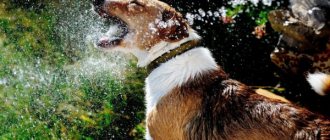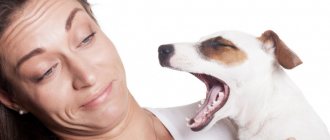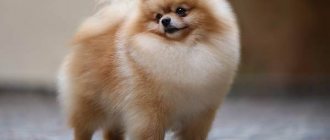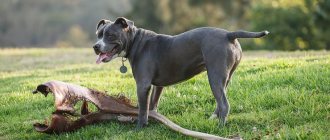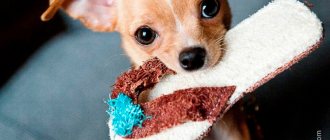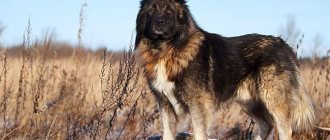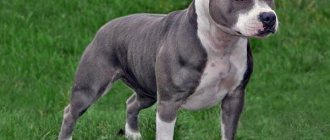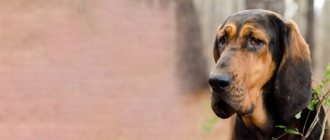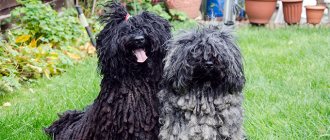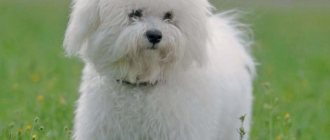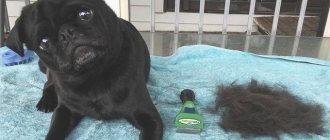Long hair is not only beautiful, but also troublesome. When getting a furry pet, you should prepare for the fact that hairs will be everywhere, including food and bed.
The ubiquitous hairs are especially annoying for allergy sufferers. Therefore, future owners are looking at dogs that do not shed. Such dogs are not only less “hairy” than their shaggy relatives, but also have almost no odor and are hypoallergenic.
You will learn which dogs are non-shedding, which one is better to choose and how to care for them from the rating of the 10 most hassle-free breeds.
Which?
There is a whole category of dogs without odor and shedding. These include:
- The so-called "naked" varieties . Unpleasant odor accumulates primarily in wool, so it is not surprising that it will not be found here. These breeds include the Peruvian and Mexican Hairless, Chinese Crested, and American Hairless Terrier. But despite one advantage, they also have a number of disadvantages: these dogs require very careful skin care. The skin gets dirty faster than the fur, such dogs can sweat - and nothing will get rid of the unpleasant smell of sweat, and their sebum mixed with dust will remain on all surfaces in the house. Such a dog will need warm clothes in winter, special creams in summer, and regular hair removal. In general, the owner will have no time to relax!
- What other dogs don't stink? Dogs with long hair , but no undercoat . Their spine is more like human hair than regular fur. The lack of odor is explained by the fact that there is no undercoat, which is saturated with sebum and quickly begins to smell unpleasant. Theoretically, such a dog should not smell even when wet. The most popular breed here is the Yorkshire Terrier . There are also some downsides: due to its structure, the wool of these breeds easily absorbs all the odors of the environment. So, if you don’t bathe your pet every week, it will smell bad—just different. You will also need to dry the coat so that your pet does not catch a cold, and comb it often.
- Short-haired dogs with a hard coat without undercoat . There is one pattern here - the smaller the dog, the weaker its smell.
- Poodle breed . Despite the fact that they have an undercoat and beautiful, thick fur, the smell is almost completely absent. It will become completely indistinguishable if you wash the animal frequently.
So, which dogs don’t smell like dog and don’t shed, we have a huge list! They, of course, exist, but they will require even more careful care from the owner than breeds with a smell. Therefore, when getting such a breed, weigh the pros and cons: will you have enough time to care for your pet properly?
Fox Terrier Wirehair
The breed is a small terrier, about 39 cm at the withers. It should not be confused with the Smooth Fox Terrier, which is a completely different breed.
Wire Fox Terriers have a very developed defensive reaction, which is why they can bite; this must be taken into account if there are small children in the family
The dogs are quite strong, with an athletic build. Very active, sometimes naughty, do not like loneliness. Hunting instincts are highly developed, so the pet can chase cats and other small animals. Wire Fox Terriers shed little and require regular brushing.
They don't smell
If you answered yes to this question, congratulations: most odorless breeds are also not prone to shedding. So, by choosing a pet from this list, you will get a creature that loves you devotedly, who will not stink and leave its fur everywhere.
So, here is a list of breeds that do not shed and do not smell:
Chinese Crested
This beauty was bred in ancient China, hence the name. There, this breed was an indicator of the status of the owner: only wealthy people could afford it. But they never parted with the crested cat anywhere, they even took it with them on voyages - and this is how the breed spread throughout the world. The animal’s head is indeed adorned with an unusual crest, which often becomes a source of pride for its owners: it is combed, decorated with bows and even curled.
There are two subtypes of the Chinese Crested: completely hairless, or with a little fur. Both varieties are odorless . When starting a crested cat, you need to take into account its characteristics.
This is the most odorless dog, moreover, friendly, very active and attached to the owner, which cannot remain alone in the apartment for a long time. Despite her decorative nature, the crested cat cannot do without walks - she needs to satisfy her curiosity. And in order to go for a walk with her, you will need a whole arsenal of clothes - the dog gets cold easily.
But if you take care of the animal, it will reward you with devotion and a lively mind: the crested one easily learns new tricks and can be trained. She also needs weekly bathing, shaving of the hair on her face if it starts to grow, and trimming of her nails. The diet is dry food with the addition of boiled vegetables and fruits.
Peruvian hairless
This is one of the most ancient breeds, which was bred back in the Inca era. The animal has a fur coat on its head, tail and legs, but otherwise has no hair. This dog is very graceful and beautiful, it is also called the “ Peruvian orchid ”. She is an excellent guard, equally attached to all family members, but needs constant attention: without it, the pet will begin to bark and whine. Moderately active, you can not walk with her often.
But she will need to be bathed after every walk; thin skin easily clogs pores and causes acne to appear . Fortunately, Sobaku described in detail the process of washing a pet in his article “Dirt fight: how often and with what can you wash a dog?” .
I just want to smile looking at this “punk”!
The animal is unpretentious in nutrition; dry food or homemade food is enough for it. You need to choose one thing; in the latter case, your diet must include boiled meat and vegetables.
Mexican naked
Another pet that is odorless and does not shed, from ancient times, which was bred by the Aztecs - their images can be found on wall paintings made 3000 years ago. True, the Aztecs did not really value the decorative features of dogs: they bred them for food and for ritual purposes. They also considered this breed capable of “taking away” any disease from a person.
Just babies
This is a very energetic dog that loves to play - preferably with its favorite owner, whom it chooses - and only one person. Gets along well with children, excellent with other pets, is open and sociable. At the same time, she has the character of a sanguine person; you can safely leave her alone in the apartment without fear of destruction.
Yes, yes, this is the same funny dog from the wonderful cartoon “The Secret of Coco”!
Demanding on nutrition : there must be boiled meat, beef and other low-fat varieties, vegetables and fruits. Fermented milk products should not be given. Your dog's teeth will require special care: they easily become inflamed and fall out. So you will have to brush your teeth daily . Also, the Mexican Hairless is sensitive to cold, easily catches colds and gets sick.
Step-by-step master class: how to brush your dog’s teeth
American Hairless Terrier
Bred in America in the last century, it is found in two varieties: miniature and rather large dogs. A distinctive feature is the complete absence of hair (with the exception of sideburns), soft skin with contrasting spots. The color can be almost any. Friendly and sociable, they get along well with other animals, especially cats . Excellent security guards.
The Hairless Terrier is considered a nanny dog that will always find a good language with children. Thanks to its reasonableness and moderate activity, this is an ideal dog for an apartment and a child .
You will find other breeds in the articles Four-legged friend: 34 dog breeds for children and Breeds of small dogs for an apartment: choosing a compact friend
The weak point of dogs of this breed is health . You need to take care of your skin by bathing and wiping with wet wipes between baths, wiping frequently watery eyes, trimming your nails, and applying anti-frostbite or sunburn cream.
The diet should also be special : 60% white meat, 25% cereals and vegetables, 10% dairy products. Prone to gastritis.
American pit bull
A fighting, but not aggressive dog. Outwardly, it is very similar to the Staff, but has a different muzzle structure and a kinder facial expression. Completely neutral in all respects by nature. It all depends solely on the upbringing and purposes for which the dog was purchased.
Can become a “nanny” for children or a faithful companion on walks or bike rides . It can develop high speed, so that it will not lag behind you. Doesn't chase cats or other cars, but may not get along with a domestic cat.
Only with proper adaptation and adoption into the family at an early age will he perceive other pets as friends.
Brussels griffin
Movie Star Dog: All animals of this breed have exceptionally expressive faces, which is why they are often chosen for filming. A small companion dog with reddish fur.
It gets along well with cats, but if you get it with a rat or hamster, tragedy will occur : the breed was originally bred to hunt rodents.
The griffin is irritated by children: they are too noisy for a dog. The dog of this breed is affectionate and intelligent, but capricious and stubborn. If there is a lack of upbringing, it will begin to control the owner.
The animal will need to be bathed, cut and combed weekly. It does not tolerate heat very well and is prone to eye diseases. It is better to feed dry food, carefully controlling portions: the griffin is prone to overeating and obesity.
Dalmatian
The Dalmatian is a charming, seemingly slightly reckless spotted dog. These spots are really randomly located throughout the body, even in the oral cavity. An interesting fact is that puppies are born completely white. The film “101 Dalmatians” made this breed especially popular. But life is not so fabulous and carefree. Keeping a Dalmatian is a real challenge, because it is a bundle of energy and lively emotions that, at times, are impossible to calm down.
This does not mean at all that the owner of this dog will be concerned about problems, but you need to be prepared for them. With proper upbringing and training, these cute dogs can become true friends. This is one of the few breeds that were bred as “carriage” dogs, that is, dogs that accompany the carriage, clearing its path.
It is difficult to tire a Dalmatian, and he must also experience physical activity every day (running, active games with a ball). They can accompany a bicycle running nearby for hours until the owner’s legs get tired
The Dalmatian does not smell at all, but sheds a lot!
The Dalmatian may suddenly feel like the head of the family, so it is very important to convey to him who is boss in the house. They are cunning manipulators and at the slightest indulgence they can hang a net around their neck with their paws dangling. However, they are extremely easy to train at home. They quickly bond with the owner and his family and become part of it. He may well jump into his owner’s bed, and if he is removed from an activity that all members of the family are passionate about, he will rage and show his dissatisfaction with all his appearance.
What you need to know about animal allergies
An allergic reaction occurs as a result of hypersensitivity to a specific irritant. There are many types of allergies, so the lack of fur in a pet is far from the only indicator of hypoallergenicity.
There are no dogs to which humans are completely allergic. But there are those who cause a less strong reaction. In addition to fur, allergens include a special type of protein contained in dog saliva, urine, sweat, secretions of the sebaceous glands, dandruff and particles of dead skin.
You can find out the exact source of the disease with the help of an allergological study. It is recommended to choose a four-legged pet based on its results.
They don't shed
Let's look at dog breeds that don't shed or smell.
West Highland White Terrier
This cute little cloud of white fur comes from Scotland. Initially, the breed was bred as a hunting breed for small game, foxes and badgers. To this day, a pet with this long name is able to crawl into any crack in your apartment - like into a badger hole.
Their fur is thick and two-layered, which protects animals from the cold. At the same time, the pet does not smell and practically does not shed. The baby's weight does not exceed 6-10 kilos, it is a very active, friendly and sociable dog. He will be a good companion and a vigilant guard .
Special care will be required for the coat : it must be constantly clean and not matted. You need to comb your pet twice a month. The baby also needs regular walks so that he has somewhere to burn off his energy. They are unpretentious in nutrition.
Poodle
There are three varieties: toy, miniature and standard. All three breeds are guaranteed to be odorless and non-shedding. The Poodle is a very smart and extremely active dog with curly soft fur and long legs.
Poodles were born in Germany, their German name “Pudel” literally meant “to splash in the water”, this once again reminds us of the hunting nature of the dog, which was bred to hunt birds. Regular poodles are the oldest representatives of the breed. Most often, it is these poodles who become the owners of extravagant haircuts.
By the way, today haircuts are performed for aesthetic purposes, but real dog lovers know that such hairstyles were invented to keep warm.
Despite their extravagant haircuts, poodles are far from fragile and shy animals. They lead a very sociable, friendly lifestyle. They love to run and play. The Poodle is a cheerful family dog that can play with children all day, and in the evening lie down near the fireplace or the owner’s bed.
These dogs do an excellent job of guarding. They do not bark without a reason, they can distinguish between “friends” and “strangers,” and they bark only when absolutely necessary . When danger arises, they do not hesitate to protect their owner and his family.
Poodles are highly trainable and learn new commands. They just pick things up on the fly. After the basic training course, you can move on to more complex tasks and teach him complex tricks.
She is easy to train and happily learns new tricks . In this case, the animal will need to devote a lot of time. Caring for a poodle to make it look good is a whole epic. It needs to be cut in a certain way, combed and washed.
Poodles are quite unpretentious in their diet, but in order not to put their health at risk, they should be fed a balanced diet. They have a sensitive liver, so fatty foods are excluded.
Greyhound
A slender and slender breed with a long, elongated muzzle. Can develop tremendous speed due to its long limbs. There are both “woolly” and smooth-haired representatives of this breed, however, none of them smell.
Behavior is calm, even passive. The aristocratic past makes itself felt, because this breed was at court and was considered very rare in Tsarist Russia.
Adaptation is difficult, you definitely need the help of a specialist . Generally does not do anything unless commanded or absolutely necessary. It easily makes contact only with rare breeds; with the correct influence of the owner, it can also make friends with “simple” breeds.
In general, their character is quite capricious, because they lived almost their entire history in greenhouse conditions, palaces, and houses of aristocrats. A beautiful and stately dog that can emphasize the status of the owner.
Boxer
A powerful and strong dog, born in Germany, combining courage, hot German temperament, kindness and loyalty to its owners. Due to his short fur, he does not emit that unpleasant “wet dog” smell.
The excretory system is designed in such a way that even under the most severe stress, dogs do not experience shortness of breath, much less sweating.
She loves children and pets, often plays with them, and can cheer them up if she feels in a bad mood. He will never refuse a walk, even when it’s raining outside. Such a dog needs to be washed once every 2-3 months, and even if this is not done, the unpleasant odor is barely perceptible.
Bichon Frize
The Bichon Frize is a small breed, up to 30 cm at the withers. These decorative dogs are sociable, affectionate and energetic, and need attention. Although Bichons are active, they do not need long walks.
The Bichon Frize gets along well with other pets and children.
Dogs of this breed do not shed and rarely cause allergies. They need to be brushed daily and can be trimmed to make grooming easier.
Hypoallergenic
Portuguese merman
Excellent proof that even a large animal can not smell or shed. In addition, Portuguese waterweed is the most hypoallergenic , i.e. does not cause allergies in people. This is a large, muscular black and white animal with thick and water-repellent fur. It was bred in Portugal in order to transmit messages from ship to ship and drive fish into nets, as a result of which it is very smart .
It is easy to train, but at the same time it is willful: it will listen to its owner only if it considers that there is something to respect him for.
You should not get a Portuguese merman if you have no experience raising dogs before: it will not obey.
Better choose a dog from this list: 11 dog breeds for a beginner: the best first pet for you .
You shouldn’t have her even if you are busy all the time: she has a hard time with loneliness and suffers without her owner. The coat will have to be brushed daily, but there will be no problems with feeding. It is better to feed homemade food. By the way, a dog of this particular breed, Bo, lived with President Barack Obama.
Shih Tzu, or miniature lion
Indeed, this breed of dog was bred in China, at the court of the emperor, and the name is translated from Chinese as “lion cub.” Externally, the dog somewhat resembles a lion, but very small, shaggy and multi-colored. There are combinations of red and white, white and black or brown.
A very loyal and friendly dog that does not smell and (very little) practically does not shed. The wool falls out only during the combing process. In addition, it does not cause allergies in most sufferers .
You need to understand that, despite the external decorativeness, this animal cannot be a “couch decoration”. He will relentlessly follow his owner and need his love and affection . Even when your Shih Tzu is sound asleep, he will wake up and run after you if you go into another room.
The advantage of Shitzs is that they can be used to create different hairstyles.
But the dog can easily manage without walks outside. Needs regular brushing. The food is normal, but you need to keep an eye on the animal when it drinks water: due to the structure of its nose, water can completely block its breathing.
7 Best Dog Breeds for Lazy Owners
Maltese
Another snow-white baby that won’t leave a single hair on your furniture or clothes. The dog was bred in ancient Rome as a companion for women. Also used for hunting rodents. The lapdog has an excellent character : at the same time playful and affectionate, perky and gentle. Allergies (as a rule) do not occur to the wool of this breed, for this reason the Maltese is the best option for allergy sufferers.
An intelligent and curious animal that will loyally protect its owner and, if necessary, bite the offender. It is not advisable for children to have this breed .
The main difficulty in grooming is the long, thick and pleasant-to-touch coat, which will have to be constantly washed and combed. The weak point is the eyes and lungs; lap dogs also often suffer from asthma. Therefore, before purchasing, you should familiarize yourself with the medical records of the animal’s parents.
To avoid the hassle of combing, you can give your dog a stylish haircut
What a beauty!
You need to feed her dry food, otherwise an upset stomach will inevitably occur.
The most hypoallergenic dogs: 19 breeds that do not cause allergies in humans
Scottish Terrier
The Scottish Terrier is a hunting breed and can also be a good watchdog. The dog's height is up to 28 cm. The dogs are energetic and stubborn, but nevertheless loyal and amenable to training. Suitable for both villages and cities, but physical activity and long walks are required.
Scottish Terriers are reserved around strangers and do not get along well with small children.
Scotch Terriers have long, shaggy hair. Since the dog sheds little, it needs to be brushed regularly to remove dead hair.
How to care?
In fact, almost any breed, not just the ones listed above, will not have an unpleasant odor if the dog is in good health and is properly cared for.
Important: if your pet suddenly starts to smell bad, this is a reason to contact a veterinarian and read our articles:
In addition to poor care, the following reasons can affect the smell:
- gender – males smell stronger than females. If smell is important to you, it is better to get a girl dog; she only shows it during heat;
- age . The older the dog, the worse the health, and, accordingly, the smell;
- humidity . After being exposed to rain and swimming, the dog begins to smell stronger;
- An excess or large proportion of carbohydrates in the diet can cause metabolic disorders, malfunction of internal organs, and unpleasant odors. Remember that the main food for dogs is raw meat and plant by-products. Occasionally indulge in sweets and candies;
- seasonal phenomena . Often, hot weather can affect a dog's body chemistry and stimulate the glands that produce foul odor. This period lasts a maximum of a couple of weeks, after which the dog adapts to new climatic conditions.
To prevent your pet from shedding and stinking, you need to:
- monitor your health. A sick animal sometimes gives off a downright stench, caused by problems with teeth, gums or digestion. Also, the smell can indicate skin diseases;
- regularly bathe him with dog shampoo, wipe his coat dry after coming from the street if it has been raining or snowing;
- if the dog is a bitch, she needs to be bathed immediately after estrus;
- feed the animal normally;
- devote time to combing, and, if necessary, visits to the hairdresser.
Special care
Hypoallergenic pets do not require specific care. However, to prevent allergic reactions from occurring, it is not enough to simply buy a low-shedding dog.
The following set of measures must be observed:
- Cleanliness in the house is a key key to success. Microscopic irritant particles do not fly on their own. Therefore, it is important to wipe off dust in a timely manner and not smoke indoors.
- The dog must know the owner’s personal space and its own and understand that the bed and sofa are forbidden territory.
- When choosing a long-haired breed, it is important to knowingly remove all carpets and rugs from the floor, as they are excellent accumulators of wool particles.
- Every two weeks, the animal must be bathed and combed, and its sleeping and eating area must be regularly wet cleaned with mandatory disinfection.
- Choose food for your dog from natural ingredients and use proven shampoos and care products.
- Regularly show your dog to the veterinarian and carry out timely procedures to exterminate fleas, lice and worms.
- If one of the family members suffers from allergies, it would be useful to install an air purification filter in the apartment.
- You should not immediately bring the puppy into your apartment. To determine the body’s reaction, you need to first communicate with it on neutral territory, for example, on the breeder’s territory.
- To avoid illness, it is advisable to minimize all contacts between your pet and street animals.
The main dog breeds considered carry minimal risk to the health of an allergic owner. Which non-shedding dog to choose is a personal decision for everyone.
Irish Water Spaniel
The Irish Water Spaniel is a dog with a dense, stocky body and thick coat with almost no undercoat. This is an exception among spaniels, which tend to shed their hair. Their character is active and mobile, their intelligence is developed, like all hunting breeds. Such dogs need long walks near bodies of water, as they love to swim.
Review of the 10 Best Non-Shedding Breeds
If you want a dog that is odorless, doesn't shed and doesn't cause allergies, you should take a closer look at the following 10 breeds.
Chinese Crested
Refined, gentle and loyal, the Chinese Crested dog is perfect for keeping in an apartment. These pets are extremely smart and try to please their owners in everything. Therefore, they are easy to teach not only standard commands, but also circus tricks.
There are two varieties of the breed - hairless and with fur. In the former, hairs are present only on the head, paws and tail. The second, the so-called “powder puffs,” have a body covered with a soft fur coat.
Since the Chinese Crested's skin is not protected, it must be bathed with special hypoallergenic shampoos, lubricated with sun creams and moisturizing lotions before going outside, and dressed in winter.
Dogs are susceptible to obesity, heatstroke, and colds. They often have problems with teeth, joints, and eyes.
Another disadvantage is the excessive need for communication. Animals cannot stand loneliness and become strongly attached to one person. Therefore, it is difficult to adapt when the owner changes.
Yorkshire Terrier
Despite their small size, Yorkies are brave, inquisitive and energetic. They are ready to play for hours and follow their owner everywhere. Pets can become lazy only in old age.
The Yorkshire Terrier's coat is smooth, silky, almost does not fall out and does not cause allergies. But she needs to be constantly looked after. The dog is combed daily to prevent tangles from forming. Once every 4–6 months (more often in summer), it needs to be trimmed and old guard hairs plucked out.
York is a born hunter. He does not get along well with other animals, especially rodents. Tends to dominate and often provokes conflicts with relatives. If there are children in the house, you need to explain to them that the pet is fragile and needs to be handled with care.
The most common diseases include caries, gingivitis, insufficient blood sugar, allergic reactions, and pathologies of the digestive system.
Giant Schnauzer
The Giant Schnauzer is a large breed with a hard top coat that prevents the undercoat from falling apart after shedding. This will protect you from allergy attacks, but will require weekly combing and haircuts once every 2 months. Dogs have a balanced temperament and well-developed senses. This is a hardy and very loyal service breed.
Choosing and keeping a dog for an allergy sufferer
When choosing the breed of your future pet, consider the source of the allergic reaction and your capabilities. When reacting to fur, consider not only its length, but also the frequency of shedding.
Slobbering breeds will have to be abandoned first, since drool is the most dangerous type of allergen. For the same reason, it is recommended to take calm pets that are not prone to barking. An equally important point is size. The smaller the animal, the fewer allergens it spreads.
Remember the most important thing - there are no dogs to which a person is completely allergic. To minimize seizures when keeping a four-legged friend, you must follow the following recommendations:
Increase the frequency of spring cleaning. Combining dry and wet cleaning will reduce the amount of hair and saliva to a safe minimum.
Regularly remove dead dog hair with a comb or massage glove. If you have a severe allergy to wool, it is better to entrust this procedure to a groomer.
Keep your dog out of your bedroom, on your bed, sofas and chairs. Give him a separate corner and stop unwanted behavior from the very beginning.
Remove curtains and carpets and try to wash bedding every 3 days. All these things collect a lot of allergens, so give preference to blinds and high-quality laminate.
Wash your hands after every close contact with your pet and avoid touching their face.
Buy an air purifier. The moisture released by this device weighs down flying hairs, preventing them from entering your nose or mouth. A purifier with an ionizer works a little differently. It magnetizes hairs directly onto its filter.
Take the choice of a pet and the listed rules very seriously. This will prevent forced abandonment of the animal in the future.
Source
FAQ
Below you can find the most frequently asked questions regarding dog allergies. This may be important if you decide to get your own pet.
How to test for dog allergies?
The only reliable diagnostic method is a special allergy test. It is important that during testing all irritants that can cause an atypical reaction in animals (fur, saliva, sweat, etc.) are used. To undergo diagnostics, you should contact an allergist.
Can a dog allergy go away?
In medical practice, there have been cases where allergies can go away on their own. However, this is the exception rather than the rule. Allergy is a chronic disease that is difficult to treat.
How to cure dog allergies?
Until recently, allergies were considered an incurable disease. Today there are several methods to combat the disease, for example, ASIT - allergen-specific immunotherapy. During treatment, the patient receives the allergen in the form of tablets or an injection, and the body learns to ignore it. It takes 3-5 years to achieve lasting results. Typical symptoms that occur upon contact with an irritant can be easily relieved with antihistamine tablets, the main allergy medications.
Shih Tzu
The almighty “lion dogs,” known as Shih Tzu dogs, date back to the Tang Dynasty. One look and you'll understand why the breed once captivated royalty with its regal (but unassuming!) appearance and charming, friendly personalities. Since their hair grows naturally, it requires a fair amount of maintenance. Meet with a good groomer and get your puppy into the habit of brushing his teeth regularly.
Read also: The most fashionable colors in your summer wardrobe
Briefly about the main thing
- People are often allergic to dogs. It can manifest itself in the pet's urine, fur, saliva or sweat.
- There is no simple and effective treatment. However, the severity of the signs can be reduced by choosing a specific breed of dog.
- The least allergenic dogs are considered to be: wire-haired and hairless breeds, as well as animals with short hair that fits tightly to the body and rarely sheds.
Have you ever experienced a dog allergy? Do you think it is safe to have such a pet if you have this unpleasant disease?

